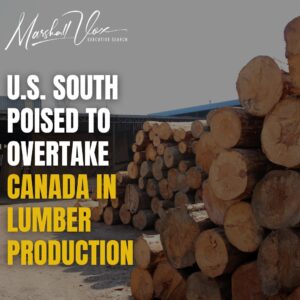Over the past few years, the lumber market has experienced heightened volatility, prompted by supply and demand disruptions and numerous economic and geopolitical considerations. Implementing new tariffs has profoundly impacted the industry, redefining how timber products are exported and imported worldwide. Understanding these tariff changes and their implications is key for businesses, contractors, and consumers to navigate the constantly changing lumber market successfully.
The Role of Tariffs in the Lumber Market
Tariffs are levies or duties that governments impose on imported products. In the lumber industry, they are a tool used to control the movement of timber products across borders. Over the years, different nations have implemented lumber tariffs to shield local industries, manage prices, and regulate supply chains. Tariffs, however, can also lead to price increases and shortages in supply, causing ripple effects that affect businesses and consumers.
The United States, for instance, has traditionally levied tariffs on Canadian softwood lumber. This has been a contentious issue between the two countries for decades, usually resulting in trade disputes and market instability. Following new tariff measures, players in the supply chain, from sawmills to builders, must adapt to these changes to continue functioning smoothly.
How New Tariffs Are Impacting the Lumber Industry
Price Increases
One of the most direct impacts of new tariffs on the lumber industry is the price rise. Imports of lumber are charged higher duties, which subsequently increase the price of timber products. For those industries that depend significantly on imported lumber, including construction and homebuilding, this can result in increases, ultimately increasing the cost of building projects.
For instance, tariffs on Canadian timber directly result in price increases in the U.S., as Canada is a significant provider of softwood lumber. The prices of timber products such as plywood and framing timber have risen over the past few years, adding further pressure on consumers and builders. While the suppliers will absorb some of the costs, some will have no choice but to pass them along, ultimately resulting in increased prices for final consumers.
Supply Chain Disruptions
Another significant impact of tariffs is the interruption they cause to the international supply chain. Like many ER commodities, lumber is prone to supply chain intricacies, such as transportation slowdowns, manufacturing bottlenecks, and regulatory shifts. As tariffs are imposed or raised, disruptions can multiply.
For example, Canadian lumber manufacturers might experience delayed shipments or issues with fulfilling tariff requirements, which can result in shortages or inconsistent product distribution in major markets. Suppliers might be unable to get sufficient lumber to keep up with demand, causing price escalation and potentially long lead times for new construction projects.
Domestic Production and Trade Relations
New levies may also impact local production and foreign trade relations. Due to rising import prices, a few countries might opt to increase local timber production, resulting in greater competition within domestic markets. This may be advantageous for local timber firms but could reduce access to previously imported low-cost materials.
Yet, the imposition of tariffs can also strain international trade relations between nations. Global trade tensions over lumber tariffs have already led to retaliatory actions, further complicating international trade and influencing prices worldwide. As markets respond to the changing dynamics of international trade, it becomes more critical for businesses to remain aware of tariff policy and its potential effects.
Strategic Responses to Navigating Tariff-Induced Changes
Companies must employ proactive measures to counteract the impact to survive in a timber market affected by new tariffs. A few strategies are worth considering:
Diversification of Sources: Businesses whose dependence is based in one country or supplier can choose to diversify their sources. By exploring new suppliers in countries that are more conducive to trade relations, businesses can better disconnect from the dependent markets that tariffs would hamper.
Investing in Local Production: Where tariffs are a high import cost, investing in local lumber production may offset expenses. This investment might include developing relationships with local sawmills, finding local sources of timber, or even creating in-house production facilities.
Reassessing Pricing Models: Firms might have to reassess their pricing models to account for the increased cost of lumber. Whether tweaking customer pricing models or exploring cost-saving options elsewhere in the company, it’s essential to ensure that the bottom-line effect of tariffs doesn’t disproportionately hurt profitability.
Tracking Policy Shifts: Staying current with policy shifts in tariff policies and trade agreements is critical. Changes in trade negotiations, politics, and regulations can all affect the lumber market. Business firms must monitor these changes on an ongoing basis to respond rapidly and make plans.
The Future of the Lumber Market
The timber market will be in flux as international trade relationships change and new tariffs arise. Businesses that depend on international timber markets must prepare for ongoing volatility, while others that can evolve with shifts in demand and supply will be in a stronger position.
In the long run, new tariffs can spur innovation in production practices as companies create new materials or improve manufacturing processes. In addition, changes in the global economy continuously have the potential to impact how trade policies are formulated, creating either a relaxation or tightening of tariff regulations.
Conclusion
The imposition of imports has widespread consequences for the industry, from prices to supply chains and global trade relationships. To successfully navigate these changes, lumber companies must remain flexible and responsive. By embracing diversification, planning, and ongoing trade policy monitoring, companies can ride out the storm of tariff-driven disruption and continue to flourish in an evolving market.
For further insights into how tariffs reshape the industry, visit this blog.




